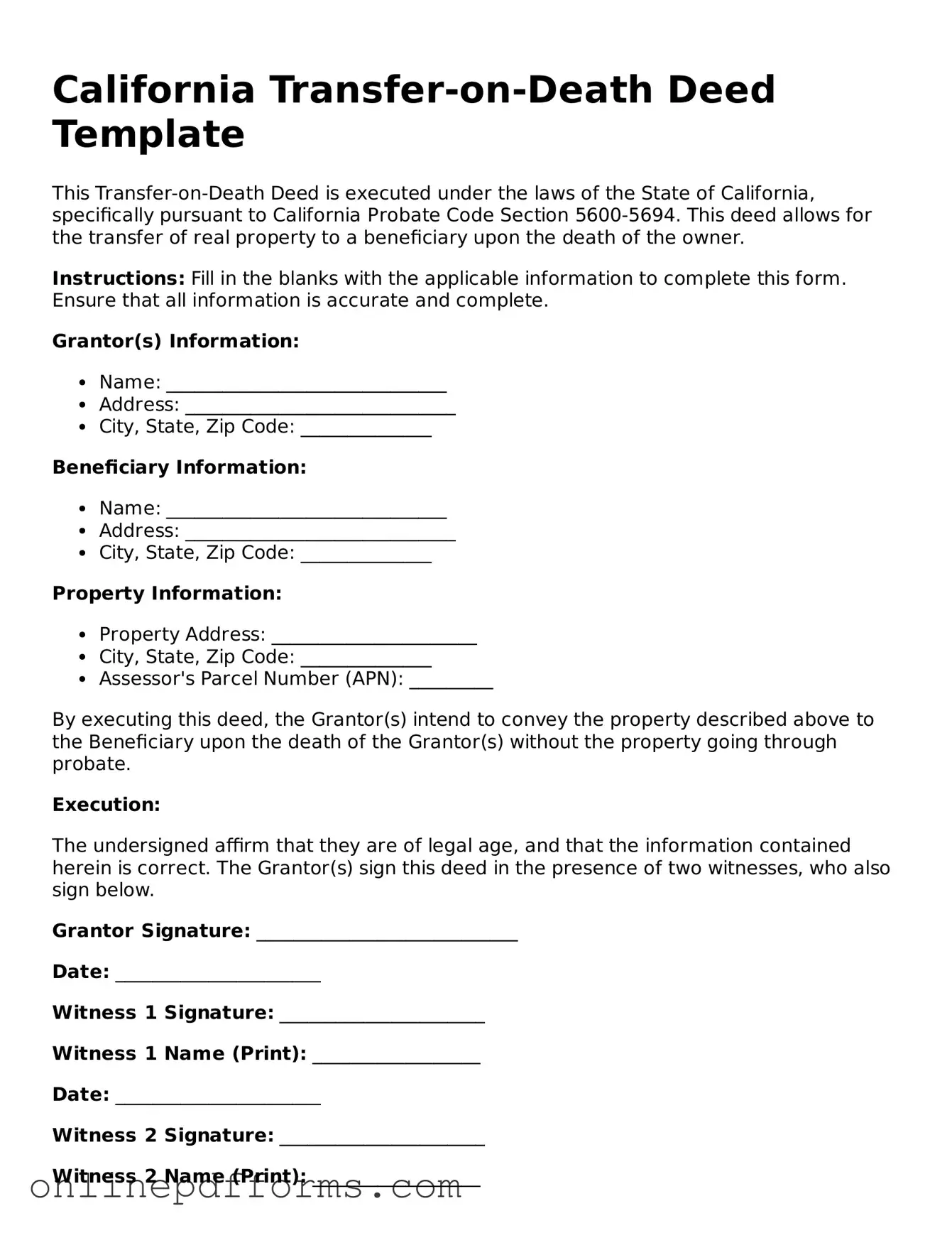Blank California Transfer-on-Death Deed Form
The California Transfer-on-Death Deed is a legal document that allows property owners to transfer their real estate to designated beneficiaries upon their death, bypassing the probate process. This form simplifies estate planning and ensures that property is transferred according to the owner's wishes. To learn more and fill out the form, click the button below.
Open Transfer-on-Death Deed Editor Now
